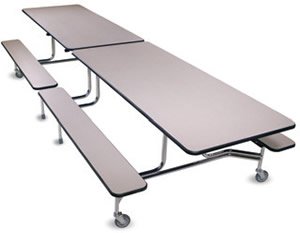Innovative Table Component Enhances Safety and Bottom Line

BioFit helps schools like Monrovia Elementary by providing tables that are easy to fold and unfold and that require less maintenance.
Monrovia Elementary School in Huntsville, Ala., uses 27 BioFit 12-seat mobile folding tables in its cafeteria. As the 13-year table warranty was ending, Facilities Manager Wayne Slater noticed the tables were becoming more difficult to fold and unfold. Since they were in excellent shape otherwise, he contacted BioFit to see if the company could help.
BioFit informed Slater of a new patent-pending component it developed to keep older tables functioning like the day they left the factory: the adjustable torsion cap. Regardless of the manufacturer, mobile folding tables use a lift-assist mechanism to facilitate safe and easy folding and unfolding. Over time, these mechanisms begin to lose torque, meaning it takes more force to fold a table and to keep it from unfolding too rapidly. The BioFit adjustable torsion cap eliminates this issue by enabling the re-establishment of the factory-specified lift capability, facilitating safe operation through the product life cycle and allowing customers to save money by avoiding costly repairs or delaying the need to replace failing tables. Additionally, due to the ease of retrofitting, the cap provides an economical way to refresh the lift on older tables in the field.
BioFit provided caps needed to retrofit the Monrovia Elementary tables at no charge, as the school, a long-term customer, would be one of the first to field-retrofit its tables. The installation proved to be easy and effective.
The adjustable torsion cap comes standard on all new BioFit mobile folding tables with affixed seating.
www.biofit.com
This article originally appeared in the issue of .